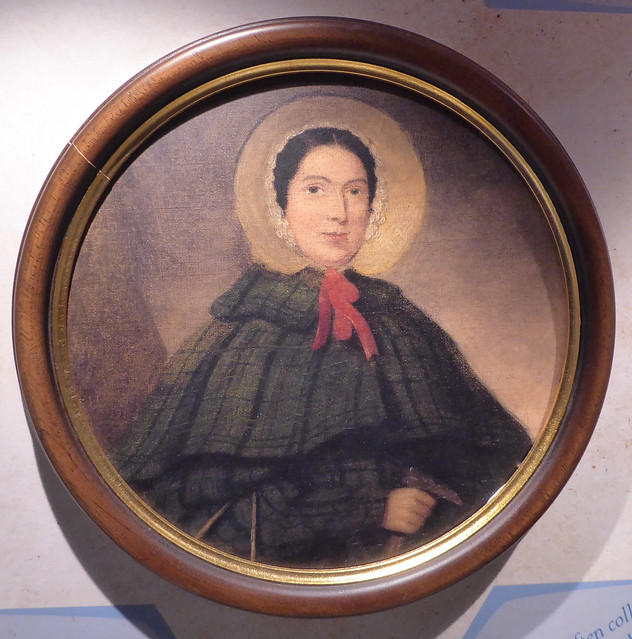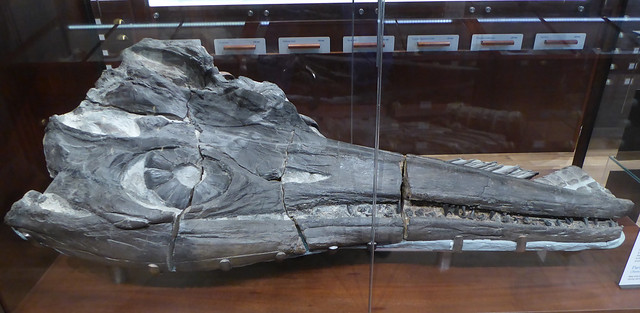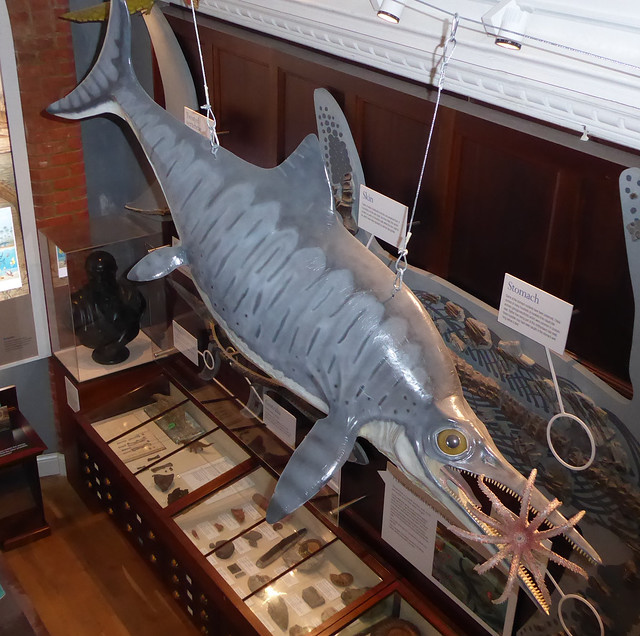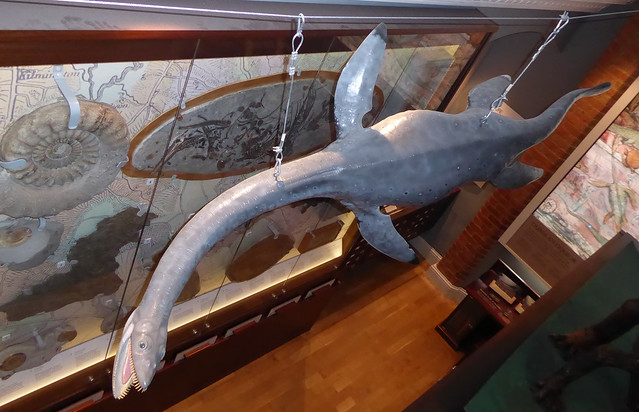The East Devon and Dorset coast in the south west of the UK, popularly known as the Jurassic Coast, was designated as a UNESCO World Heritage Site in 2001 putting it on a par with the Grand Canyon and the Great Barrier Reef. The Jurassic Coast is unique in being the only place on the planet where 185 million years of the earth’s history are sequentially exposed in cliffs, coves, and other coastal features. Since 2001, museums and visitor centres have sprung up along its 95-mile length and a fine stone sculpture, the Geoneedle at Orcombe Point, Exmouth celebrates the beginning of the World Heritage Site in East Devon. On a sunny day in early November, just before the second lockdown, I went to take a look.
The sea front at Exmouth was quiet when I arrived, there were just a few people about taking morning walks or enjoying the beach and the sunshine. I left the car and walked to the end of the promenade where red cliffs strike out across the beach. From here, it is an easy walk up a zig zag path, past the café, to the cliff top and the area known as the High Land of Orcombe. By now, the early mist had evaporated affording spectacular views from the cliff top across the Exe estuary, Dawlish Warren and the south Devon coast as far Torquay. The mild sunny weather had also brought out late season insects including bumblebees, hoverflies and an ageing red admiral butterfly. A short stroll then took me to an open grassy area above the cliffs where the Geoneedle stands and the Jurassic Coast begins.
The Geoneedle is an impressive modernist sculpture about 5 metres in height and one-metre square at the base tapering to a stainless-steel point that takes on the colour of the sky, a clear blue that day but catching the sun at certain angles. It was designed by public artist, Michael Fairfax and is constructed from three kinds of Portland stone with insets of eight different rocks representing the principal building stones found along the Jurassic Coast. The site also includes a compass showing some of the local landmarks and a Jurassic Coast hopscotch, both made from stones set into the ground. The sculpture was inaugurated by Prince Charles in 2002.
Not only is the Geoneedle a beautiful object, it also cleverly encapsulates the story of the Jurassic Coast in its design. The eight stone insets are arranged so that they correspond to the three different geological time periods of the many kinds of rock found along the 95 mile stretch of coast between Orcombe Point and Studland Bay. Starting at the bottom, the first two stone insets come from the oldest time period, the Triassic (about 250 million years ago); the hard, red rocks and softer mudstones below Orcombe Point are from this time period and were formed as sediment accumulated when the earth was an arid desert. The middle four insets are from the Jurassic period (about 170 million years ago) when southern England was under a tropical sea; some of the best-known coastal features in West Dorset, Portland and the Purbecks were laid down at this time. Finally, the two topmost insets are from the Cretaceous period (about 65 million years ago) when sea levels fell and sediments from lagoons, swamps and rivers were deposited. The Cretaceous rocks are the youngest along the Jurassic Coast and can be seen at various points notably in the white cliffs at Beer in East Devon and in the chalk stacks of Old Harry Rocks near Studland.
Much of our knowledge of the origins of the different rocks comes from studies of the fossils and minerals found along the coast giving important information on the plants and animals that lived there and the climatic conditions prevailing during the different time periods. The findings of local geologists and palaeontologists were crucial in this and the most important of these was Mary Anning, working in the 19th century, discovering fossils dating from the Jurassic period in the mobile cliffs around Lyme Regis. Her discoveries illustrated a hitherto unknown, bygone world dominated by massive marine reptiles swimming in a tropical sea.
When I had finished looking at the Geoneedle, I walked back down the zig zag path, across the promenade and on to the beach. By now, the tide had receded leaving large swathes of pale, firm sand and the area was very busy with people, many walking dogs, all enjoying the gift of this sunny pre-lockdown day. There were even two horses with riders at the water’s edge making for a very evocative image.
The low tide made it possible for me to walk around Orcombe Point to examine the red cliffs and their rocks. Starting from the beach road, red cliffs extend at right angles up to the jagged outcrop of Rodney Point. The exposed rock here is a hard sandstone of the Triassic period with considerable honeycomb weathering caused by wind and rain. Beyond Rodney Point, red cliffs continue but there is also a very striking red rock formation, the Devil’s Ledge, a broad wave-cut platform. Orcombe Point lies a little further to the east with the Geoneedle just visible, high above. These red Triassic rocks owe their colour to iron oxides and they continue with some interruptions along the coast to Ladram Bay, Sidmouth and beyond Seaton before Jurassic rocks take over near Lyme Regis.
To the east of Orcombe Point, the hard, red sandstone is overlaid by softer rocks and the strata exposed in the cliffs exhibit a pronounced downwards tilt to the east. This tilt occurred after the Jurassic period and brought the older Triassic rocks to the surface. Cretaceous material was then deposited and, after many millions of years of weathering, the Jurassic Coast of today was created with its distinctive pattern of exposed rocks from the three time periods.
If, therefore, we take a notional walk along the entire length of the Jurassic Coast, starting at Orcombe Point and finishing at Studland Bay, we will encounter a multitude of different landforms including dramatic cliffs, stone stacks, pebble beaches and rocky coves. These coastal features, and the rocks they contain, represent an almost continuous record of 185 million years of the earth’s history, rather like the pages of a book or the travels of a time machine.
That day, of course, I had only skimmed the pages of the first chapter of the book. As I walked back to the car, though, on that mild late autumn day, I reflected on how my visit had given me a renewed sense of the importance and of the unique nature of the Jurassic Coast.
This article appeared in the December 2020 edition of the Marshwood Vale Magazine























